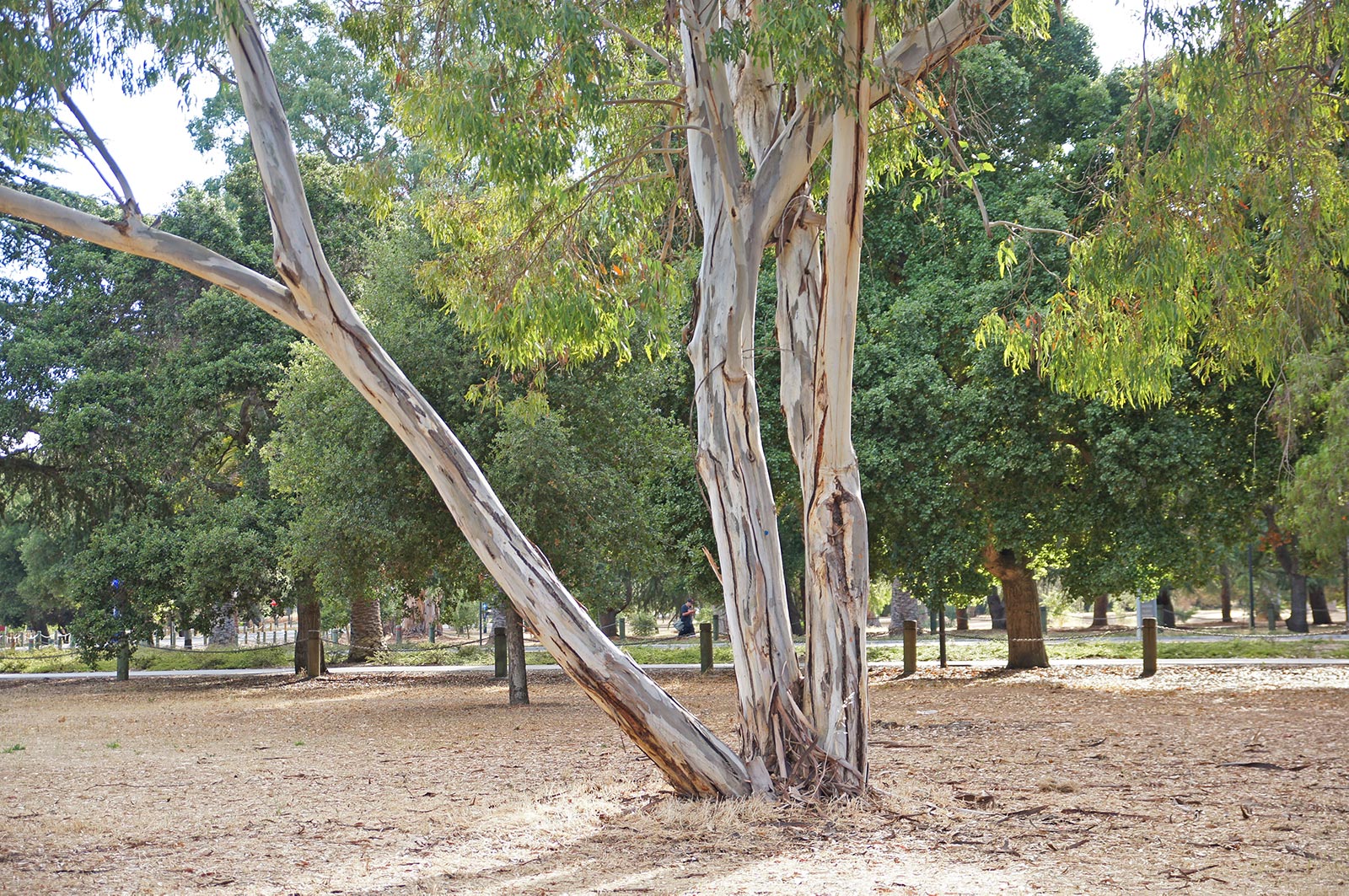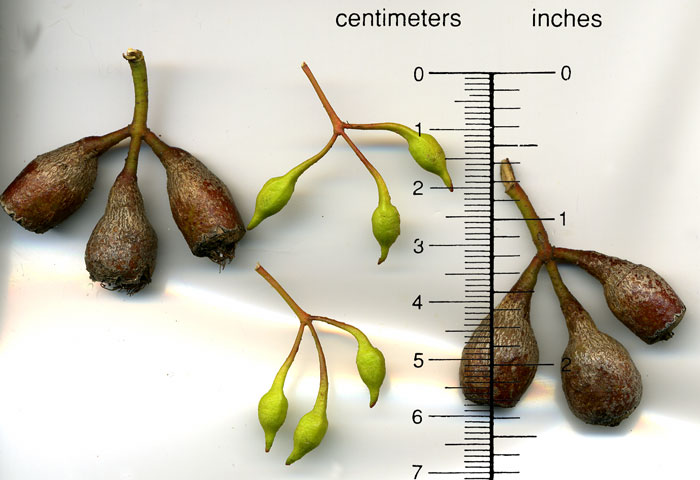Eucalyptus leucoxylon
 white ironbark
white ironbark
The name white ironbark, popular for this species in the US, is misleading since its smooth, thin, peeling bark is a far cry from the persistent, thick, black “ironbark” that E. sideroxylon sports. Much better an epithet is yellow gum. The creamy trunk can have patches of yellow and gray, with rough unshed bark at the bottom. Its heartwood is a pale pinkish buff when freshly cut, and is strong and durable.
Despite the bark being so dissimilar, yellow gum is very closely related to E. sideroxylon, as seen in their reproductive structures: the individual buds, flowers, and fruits are remarkably similar. The blossoms are red or pink or creamy white. The outer stamens lack anthers. Vivid pigmentation often suffuses the branchlets, flower cups, and fruit. The buds are in groups of 3 rather than E. sideroxylon’s 7, however. Often, one or two are missing from the clusters.
Older examples are at 562 Salvatierra Walk and in the area between Bonair Siding and Maples Pavilion. Others on Pampas Lane opposite the Credit Union and on Raimundo Way south of Stanford Avenue date back to the 1960s. Many examples at the latter location have a crooked or sprawling habit, particularly those behind the magnificent E. cylindrocarpa opposite Wing Place, some of which have particularly large fruit (about ½ inch wide). They are E. leucoxylon subsp. megalocarpa. Others are upright and of considerable height. The specimen featured in the Stanford calendar of May 1981 stood alone on Maloney Field at El Camino Real (May 2018 street view); it was removed in 2019. The two dozen or so planted in the 1990s on Campus Drive to screen Castaño and Lantana residences were all removed by 2020. Most of them had abundant bright red flowers; some had white. Nearby, you can still see similar plantings along the Campus Drive edge of the Mirielees House parking lot. The one at the south end has a remarkably swollen lignotuber at its base.
Illustrations: leaf and fruit, from An Illustrated Manual of Pacific Coast Trees, Howard E. McMinn & Evelyn Maino.
Related material: Eucalyptus checklist
- Main References for New Tree Entries.
- Ronald N. Bracewell Papers, 2008-135, SC 896, Box 12. Stanford University Archives. (Trees of Stanford Calendar, 1981)
About this Entry: Authored Jan 2025 by Sairus Patel.





